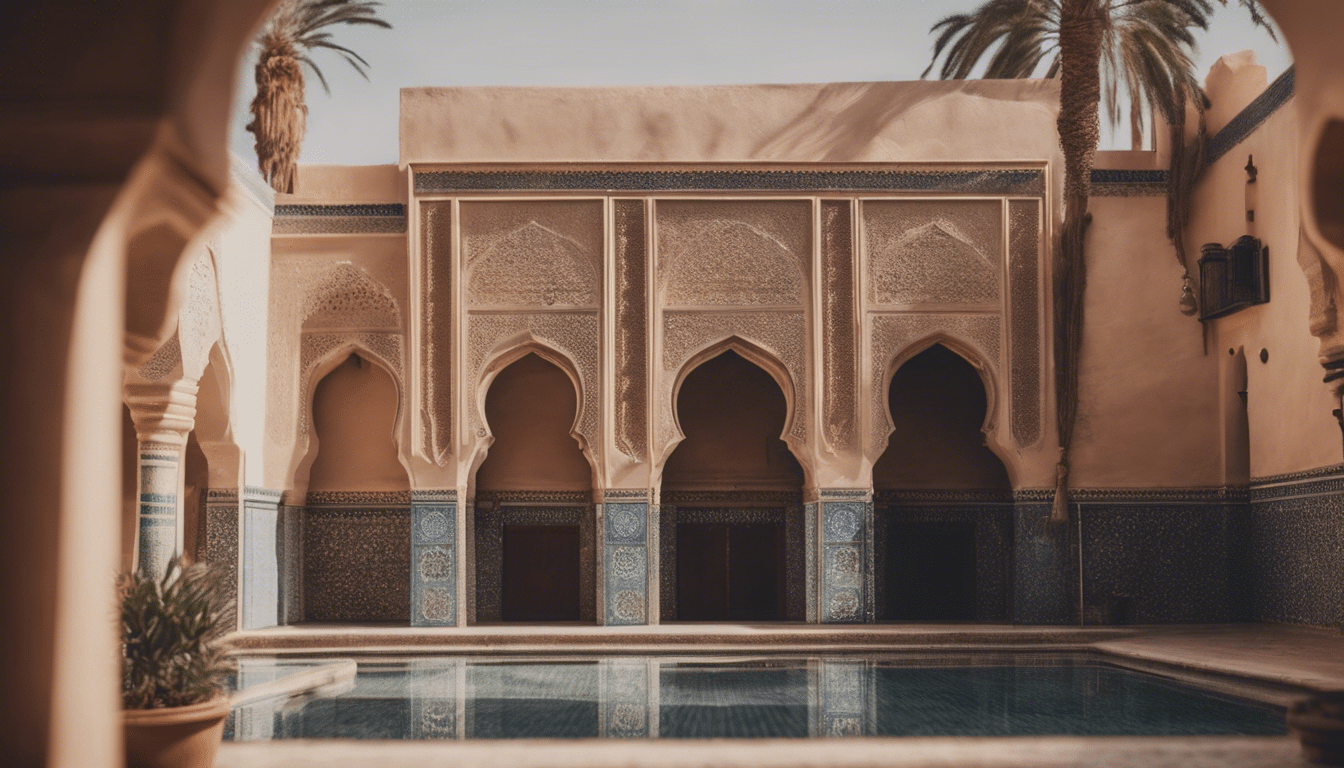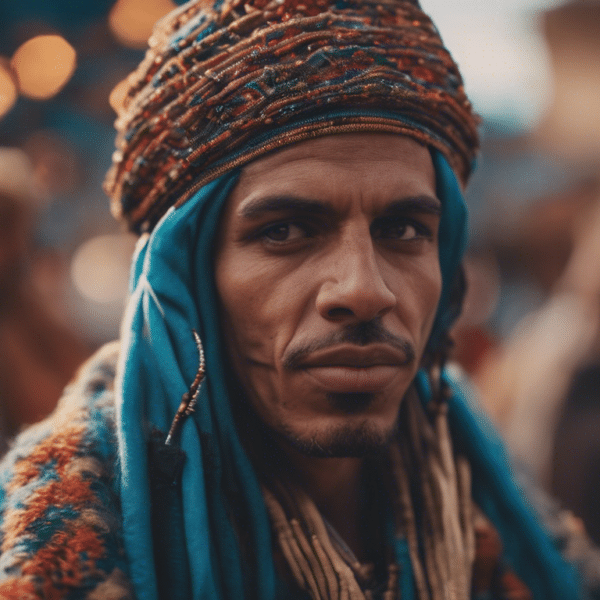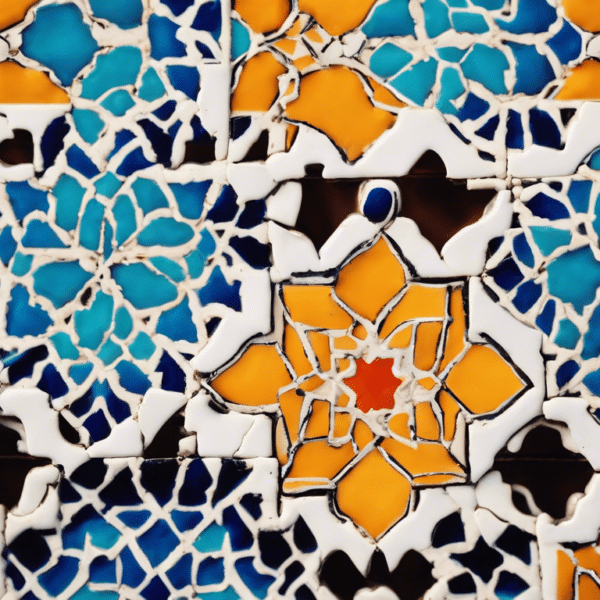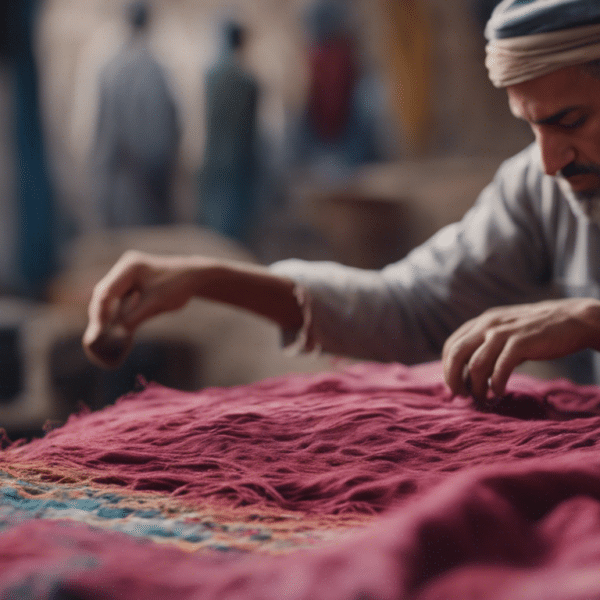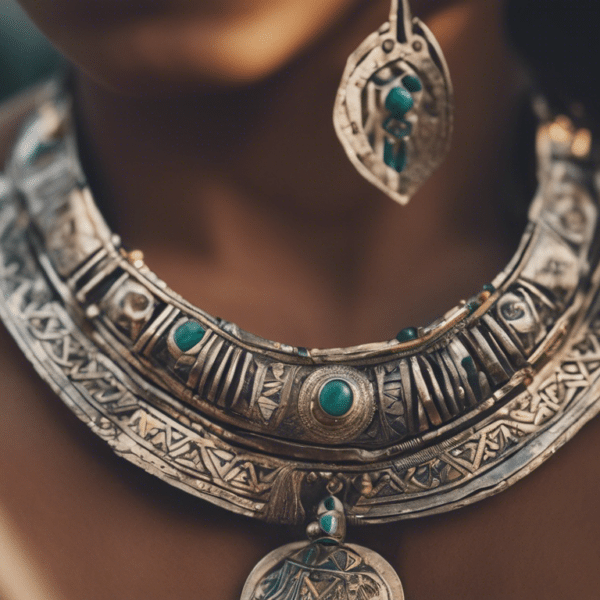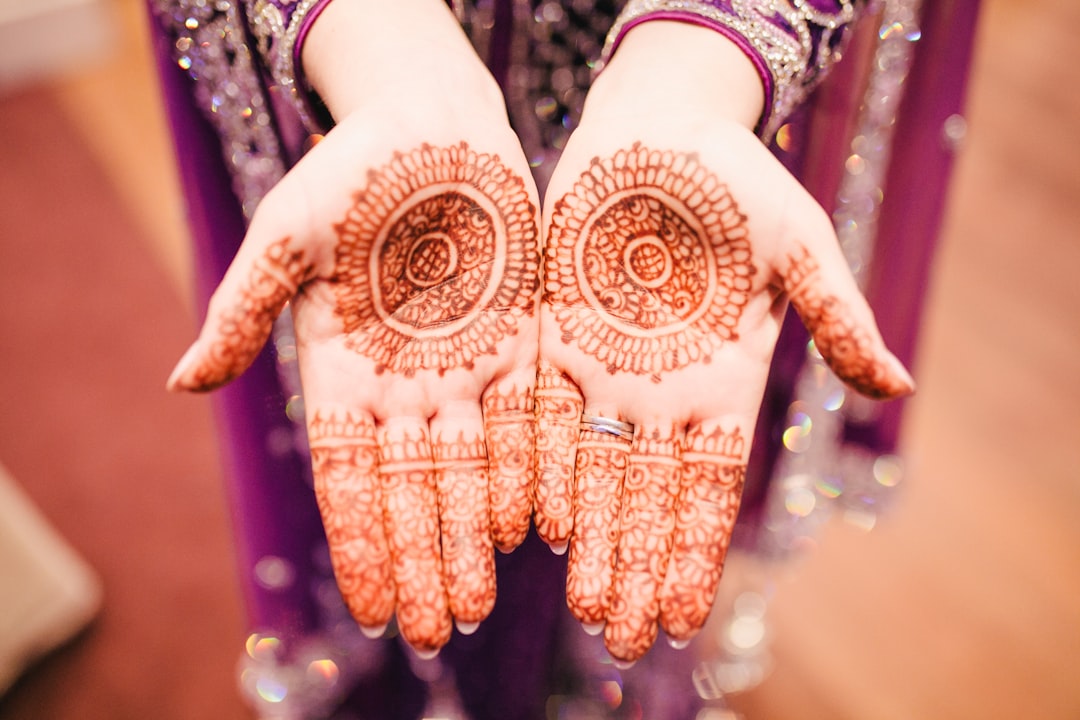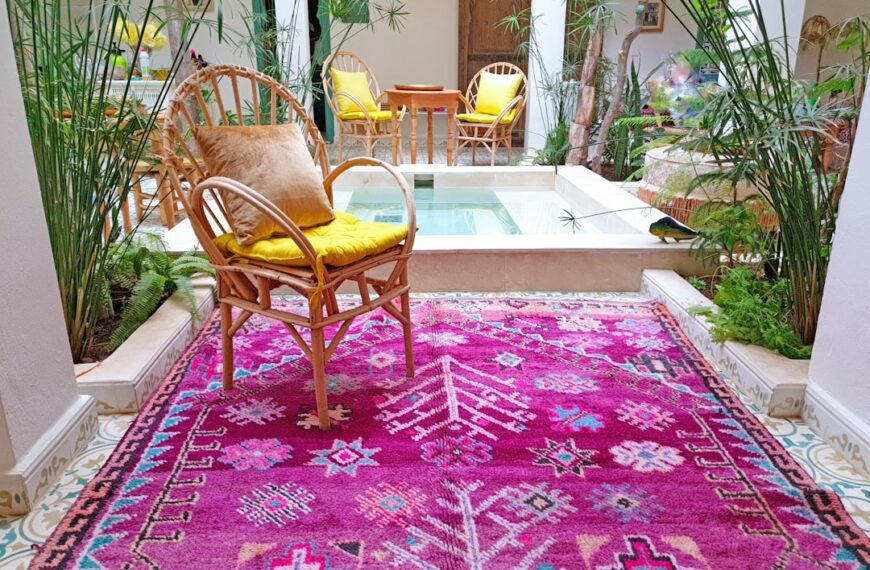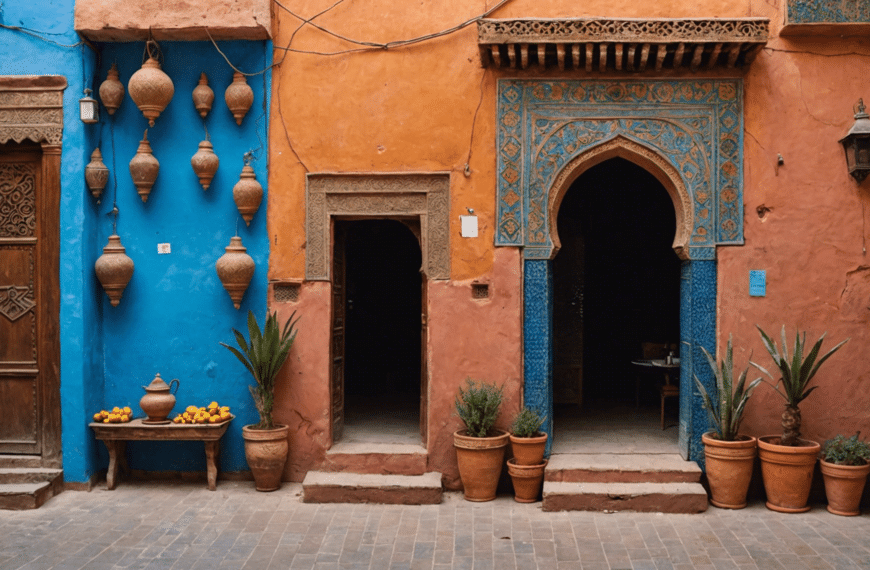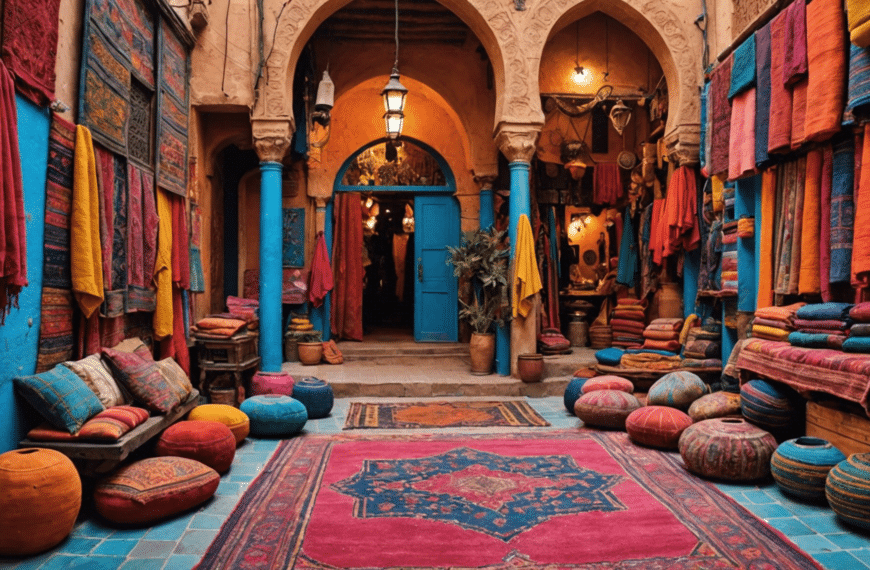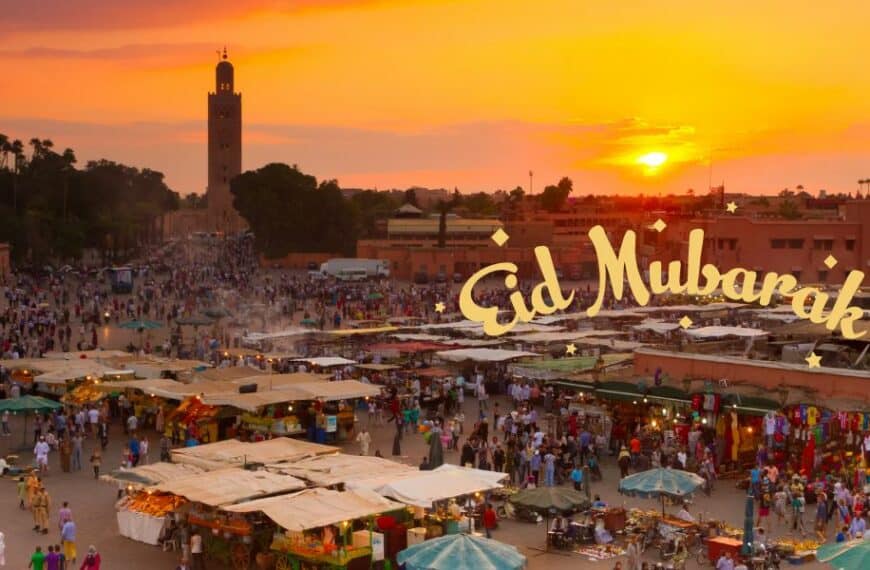The Historical Roots of Moroccan Architectural Design
Moroccan Architecture: Tracing the Indelible Impact of History on Design
Within the heart of Morocco lies a treasure trove of architectural marvels, a vibrant manifestation of the nation’s storied past. Each archway, tile, and carved doorway narrates the tale of a confluence of cultures. The historical roots of Moroccan architectural design are as deep and intricate as the patterns adorning its famed structures. To understand the Moroccan architectural ethos is to take a journey through time, where every era contributes a layer of richness to the overall tapestry of design.
The Berber Influence: Foundations of Moroccan Architecture
Renowned for their resilience and deep connection to the land, the Berbers are considered the indigenous architects of Morocco. Their structures, often made of organic materials such as mud and stone, reflected a harmonious relationship with the natural environment. Berber designs prioritize functionality and climate adaptability, leading to the inception of features like thick walls for insulation and courtyard homes that provided respite from the hot sun. The significance of these elements can still be seen in modern Moroccan architecture.
Islamic Intricacies: The Spiritual Imprint on Moroccan Design
With the advent of Islam, Moroccan architecture blossomed into an embodiment of spiritual artistic expression. Mosques and madrasas became canvases for intricate geometric patterns and Arabic calligraphy. The principle of ‘Aniconism,’ or the avoidance of depicting sentient beings within Islamic art, propelled the use of complex tile work known as Zellij and ornate plaster carvings in creating visually stunning ambiances that encourage contemplation and spiritual connection. This influence is a defining feature of Moroccan architectural identity.
The Andalusian Cross-Pollination: Synthesis of Styles Across the Strait
The exchange of ideas across the Strait of Gibraltar brought the Andalusian influence to the fore. With the Moors’ reign in the Iberian Peninsula, architectural techniques and motifs flowed into Morocco, accentuating the existing designs with new layers of complexity. Features like horseshoe arches, riads (traditionally designed Moroccan houses with an interior garden), and open balconies are all hallmarks of this cross-cultural fusion. This blend of Andalusian and Moroccan elements is palpable within the vibrant streets of cities like Fez and Marrakech.
Colonial Impressions: The Layering of Styles
Centuries later, the French and Spanish protectorates left their own indelible marks on Moroccan architecture. Through the inclusion of European styles and modernist principles, new cities like Casablanca embraced Art Deco and Neoclassical aesthetics. Yet this Western veneer could not overshadow the deeply-rooted Moroccan spirit that continued to pulse through each innovation and adaptation.
The Contemporary Continuum: Preserving Roots While Innovating
Today, Moroccan architecture continues to evolve while respecting its ancestral lineages. Contemporary architects strive to balance the magnetic allure of traditional Moroccan aesthetics with the necessities of modern function and sustainability. Projects across the country are finding ways to merge solar technology with classic mud-brick designs, proving that Moroccan architecture not only honors its past but is also firmly rooted in the present, growing towards a viable, innovative future.
In essence, the history of Moroccan architecture is a reflection of the nation’s ability to assimilate various cultural influences while nurturing its unique heritage. It’s a design narrative that speaks to an ongoing, dynamic conversation between the past and present, a confluence of diversity that resonates with the transformative spirit of Morocco itself.
Key Elements Defining Moroccan Aesthetic
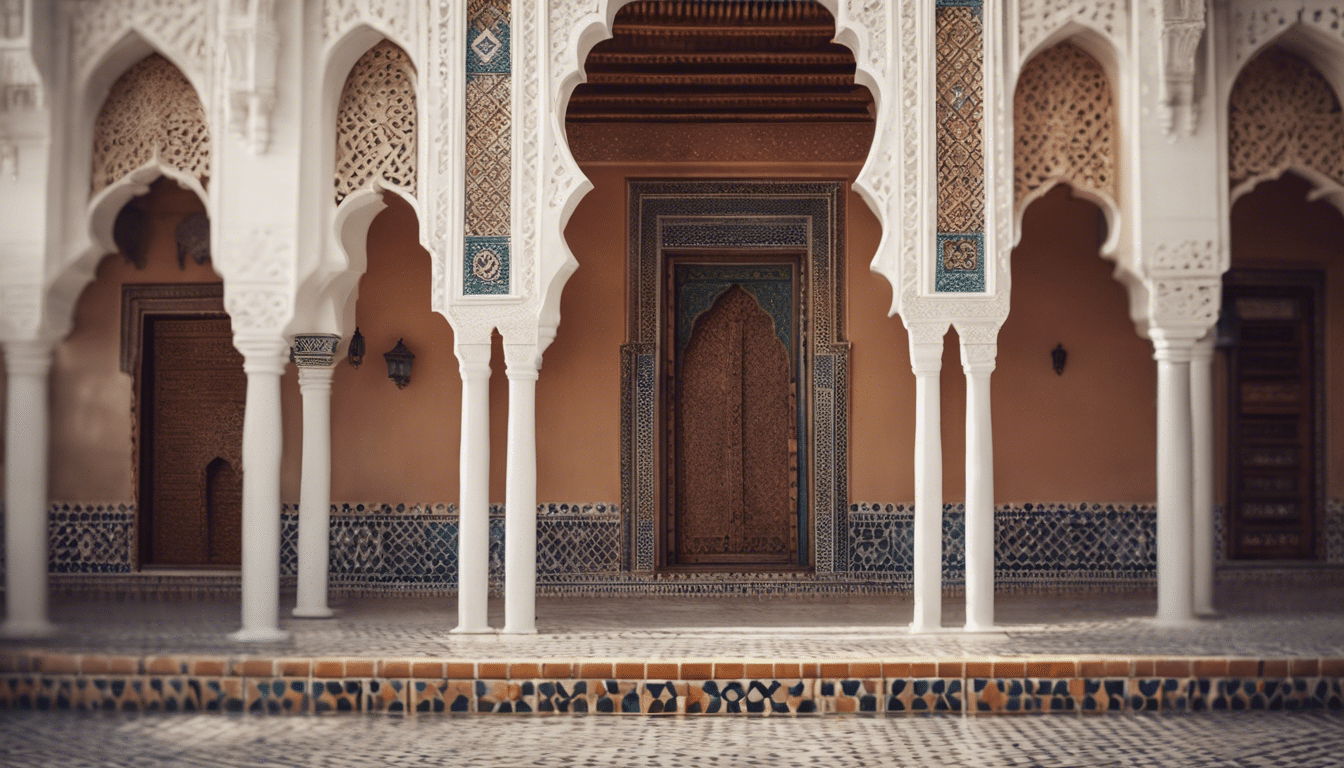
Moroccan Architecture: The Harmonious Symphony of Form and Function
In the realm of architectural beauty, Moroccan structures stand as a testament to a rich cultural heritage—a melodic interplay of aesthetics that has evolved over centuries. To the discerning eye, each element in Moroccan architecture is a verse in a poetic expression of both pragmatic needs and artistic whimsy. From the bustling streets of Marrakech to the serene landscapes of the Atlas Mountains, Moroccan skylines are dotted with signature silhouettes that whisper tales of a storied past.
Riad Courtyards: Serenity in Stone
Amidst the labyrinthine alleys of ancient cities, the Moroccan riad emerges as a sanctuary of peace and privacy. The central courtyard, often adorned with a fountain and flanked by lush greenery, serves as the heart of traditional Moroccan homes. The design of these courtyards is a deliberate choice that embodies the values of family unity, hospitality, and an intimate connection with nature—elements deeply woven into the fabric of Moroccan social and architectural ethos.
The Majestic Geometry of Zellige Tiles
Zellige, the intricately patterned Moroccan mosaic tilework, is more than just a decorative detail. It is a narrative of mathematical precision and creativity, a reflection of the universe’s order in the spectacular geometry of its designs. The meticulous assemblage of hand-cut tiles in vibrant hues creates a striking visual language that serves as an emblem of Moroccan craftsmanship and its unyielding pursuit of perfection.
Arches and Keyhole Doorways: Portals to Another Era
Walking through the old quarters of Fez or the royal palaces of Morocco, one cannot help but admire the architectural choreography of arches and doorways. These aren’t merely passageways but portals that transport one to an era where every structural detail was a craft mastered over lifetimes. The iconic Moroccan arch, often adorned with calligraphy and floral motifs, combines both aesthetics and structural integrity, merging Islamic art with practical ingenuity.
Ornate Plaster and Wood Carvings: Embossed Elegance
Echoing the grandiosity of its historical influences, Moroccan architecture is also known for its elaborate plaster and wood carvings. Sculpted surfaces of walls and ceilings reveal a canvas where shadow and light play hide and seek, creating a dynamic ambiance. This intricate work, known as ‘gebs’, showcases not just the craftsman’s skill but also a timeless dedication to adorning the mundane with a touch of the divine.
Sturdy Ramparts and Towering Minarets
The robust ramparts that girdle Moroccan medinas and the soaring minarets that guide the faithful to prayer are symbols of the inherent blend of defensive utility and spiritual aspiration in Moroccan architecture. They narrate stories of citadels that once stood vigilant against invasions and of spiritual beacons that continue to guide society towards communal harmony and divine contemplation.
Concluding Reflections
In essence, the key elements of Moroccan architecture serve as both guardians of history and standard-bearers of a rich cultural identity. They stand as markers of a time when architecture was not just about creating spaces but about weaving an enduring tapestry of human experience. For the traveler or the local, these structures are not mere buildings; they are the keepers of secrets, the mirrors of a bygone era, and an open invitation to discover the depths of Moroccan artistry.
The Interplay of Culture and Environment in Moroccan Buildings
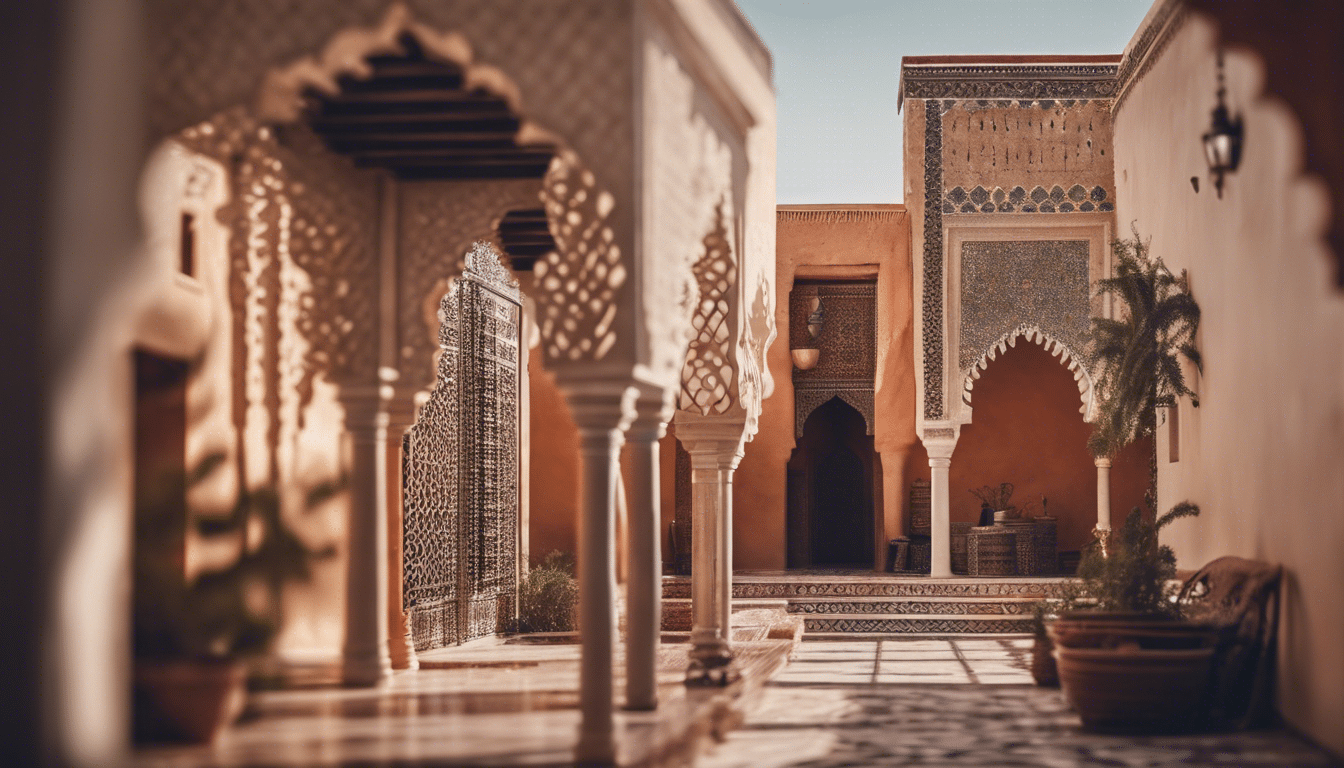
Ancestral Foundations: The Roots of Moroccan Architecture
In the heart of North Africa, Moroccan architecture stands as a dazzling testament to the country’s rich cultural heritage. This architectural style is not a static art form, but a vibrant interplay between culture and environment. Captivating travelers and art aficionados alike, Moroccan buildings are a kaleidoscope of influences, reflecting the country’s historical ties with both the Islamic and Mediterranean worlds. The architectural landscape of Morocco is harmoniously woven with intricate designs, robust structures, and a profound respect for the environment.
The foundations of Moroccan architecture are deeply rooted in the indigenous Berber traditions, augmented through the centuries with Arabic, Andalusian, and European elements. Each region of Morocco tells its own story through its distinctive architectural style, yet they all share a common language of geometric patterns, vibrant colors, and artistic detailing revered around the globe.
Harmony with the Elements: Moroccan Sustainable Practices
One of the salient features of Moroccan architecture is its remarkable adaptation to the local environment. The thick walls of traditional riads and kasbahs, made of rammed earth or sun-dried bricks, provide natural insulation against the scorching heat, preserving a cool and comfortable climate within. The discernment to use local materials not only supports the environment but also ensures that the buildings blend seamlessly with the landscape that surrounds them.
Courtyards serve as the lungs of Moroccan homes, often featuring a central fountain that cools the air through evaporation. This astute design choice exemplifies the symbiotic relationship between architecture and the local climate, optimizing natural resources to create sustainable and livable spaces.
Symbolism and Spirituality: The Aesthetics of Moroccan Design
Visitors to Morocco are often enchanted by the complex ornamentation and symbolism found within its buildings. Moroccan architecture is more than just a shelter; it is a three-dimensional manifestation of spiritual and cultural identity. Calligraphic motifs and arabesques, both of which carry religious significance, adorn mosque exteriors and artisanal workshops alike. The geometric precision in the zellige tilework and the rhythm of the moucharabieh screens are not merely decorative—they constitute a visual homage to the divine.
The enchanting play of light and shadow through intricately carved wood and stone work is not only a design choice but serves as a daily reflection of the ephemeral nature of life, encouraging introspection and peace.
The Living Culture: Preserving Moroccan Architectural Heritage
Moroccan architecture is no static relic; it is a living tradition that continues to evolve. From the winding alleys of ancient medinas to the palatial grandeur of riads, Moroccan buildings tell a story of a culture in constant dialogue with its past and present. In a land steeped in history, efforts to preserve these architectural wonders are paramount.
Contemporary architects in Morocco are blending traditional techniques with modern environmental concerns, creating structures that pay homage to historical practices while also embracing sustainability. They’re thinking not only about design but about the legacy they leave—both aesthetically and ecologically.
In conclusion, whether meandering through the bustling souks, or standing in the serene silence of a desert kasbah, one cannot help but be moved by the profound beauty and intelligence of Moroccan architecture. These structures are more than mere buildings; they are the soul of Morocco materialized, a place where culture caresses every curve and carves every corner. And as the sun sets, staining the skies in hues of orange and purple, the Moroccan skyline stands as a testament to a land woven intricately with the threads of artistry and sustainability.

